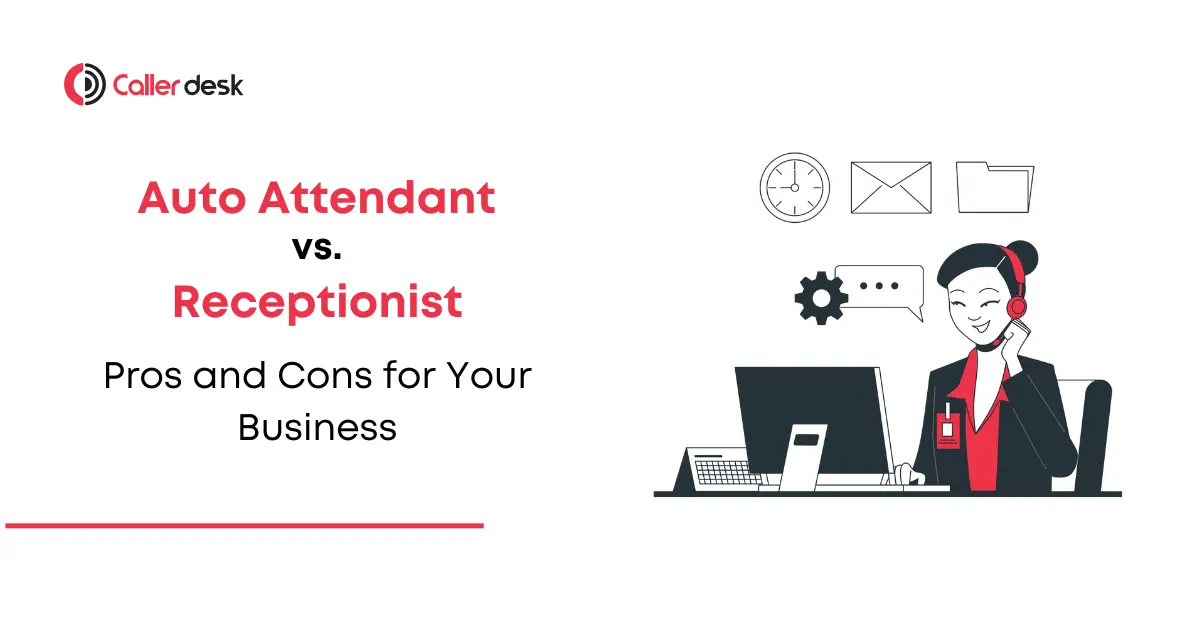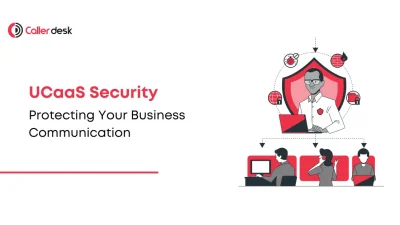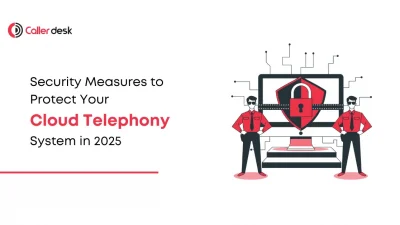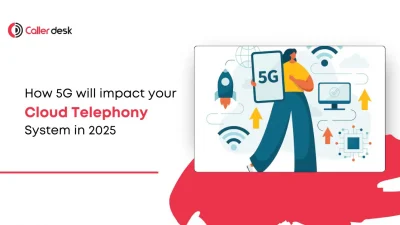Effective communication is critical for business success in today’s competitive landscape. Whether you’re answering customer inquiries, routing calls, or resolving issues, how you manage calls can define your customer experience. But what’s the best approach for your business?
Should you choose an auto attendant or a live receptionist?
Both solutions offer unique advantages and limitations. Auto attendants deliver efficiency, scalability, and round-the-clock availability, while receptionists provide a human touch and adaptability. This article explores the benefits, drawbacks, and ideal use cases for each option, alongside a quick case study to help you make an informed decision.
What Is an Auto Attendant?
An auto attendant is a virtual phone system that greets callers and directs them through a menu of options using pre-recorded prompts. It’s like having a 24/7 digital receptionist that ensures every call is routed accurately.
Key Features of an Auto Attendant:
- Operates 24/7 for round-the-clock availability.
- Reduces the risk of human error with consistent call handling.
- Scales effortlessly to handle increasing call volumes.
What Does a Receptionist Offer?
A receptionist is a live person who manages calls, provides personalized assistance, and addresses unique customer needs. Receptionists bring warmth and professionalism, making them a great choice for businesses prioritizing customer satisfaction.
Key Features of a Receptionist:
- Adapts to unique customer requests and complex inquiries.
- Enhances customer loyalty with a personalized approach.
- Represents your brand values and professionalism through every interaction.
Benefits of an Auto Attendant
1. Cost Savings
Why hire multiple receptionists when an auto attendant can do the job? It efficiently manages all incoming calls, saving your business valuable resources.
Example: Imagine a startup with limited funds. Instead of hiring extra staff, they use an auto attendant to handle calls, freeing up the budget for critical areas like marketing or product development.
2. Round-the-Clock Service
Your customers don’t stick to office hours, and neither should your business. An auto attendant ensures you’re always reachable—even at midnight.
Example: A retail company gets late-night calls about delayed deliveries. With an auto attendant, customers hear pre-recorded updates or get routed to alternative contact options, keeping them informed and happy.
3. Consistency
Tired of missed messages or inconsistent call handling? Auto attendants deliver the same professional experience every time.
Example: A healthcare clinic uses an auto attendant to route calls to the right departments—appointments, billing, or emergencies—ensuring patients always get the right help without confusion.
4. Scalability
Growing businesses mean more calls. An auto attendant handles the increase without breaking a sweat.
Example: A tech company launches a hot new product and sees a spike in inquiries. Instead of overwhelming their team, the auto attendant manages the surge, keeping everything running
Drawbacks of an Auto Attendant
1. Lack of Personal Touch
While auto attendants are efficient, they can sometimes feel robotic to customers.
Example: An elderly caller reaching out to a bank might struggle to navigate the automated menu and miss the comfort of speaking to a human representative.
2. Navigation Challenges
Auto attendants can frustrate callers who need quick answers.
Example: A frustrated parent calling a school to inquire about their child’s absence might find navigating a menu cumbersome, especially if the options are unclear or too lengthy.
3. Limited Flexibility
Auto attendants can’t handle unique or out-of-the-box scenarios.
Example: A customer with a complex request, such as resolving a complicated billing issue, may not find the right option in the menu and feel stuck.
Benefits of a Receptionist
1. Human Interaction
Nothing beats the personal touch of a live receptionist. When customers talk to a real person, they feel valued, heard, and connected to your brand. This personal interaction builds trust and turns one-time customers into loyal advocates.
Example: Imagine a guest calling a luxury hotel to book a room. Instead of a generic menu, they speak to a receptionist who recommends the perfect suite and exclusive packages based on their preferences. That’s how you create a memorable experience.
2. Adaptability
Automated systems are great—until things get complicated. That’s where live receptionists shine. They can think on their feet, adapt to unique customer needs, and provide tailored solutions instantly.
Example: A potential buyer calls a real estate agency with specific property requirements. A receptionist doesn’t just take a message—they dive into details, answer questions, and even schedule a property tour right on the call. That kind of flexibility closes deals.
3. Brand Representation
Your receptionist is often the first interaction a customer has with your business. A friendly, professional voice sets the tone and creates a lasting impression that reflects your brand’s values.
Example: A law firm with a live receptionist answering calls professionally exudes reliability and competence. For clients dealing with high-stakes legal matters, that first impression builds immediate trust.
Drawbacks of a Receptionist
1. Higher Costs
Hiring a receptionist comes with ongoing expenses like salary, training, and benefits, which can stretch a small business’s budget.
Example: A local bakery might find it challenging to afford a full-time receptionist. Instead, they could use an auto attendant to handle calls and save money for essential operations like purchasing fresh ingredients.
2. Limited Availability
Unlike auto attendants, receptionists are only available during office hours, which can mean missed opportunities.
Example: A travel agency catering to international clients might lose valuable calls from overseas customers who try to reach them after business hours. With an auto attendant, they could handle inquiries round-the-clock.
3. Inconsistencies
Human errors, like misdirected calls, can create a poor customer experience.
Example: A software company with multiple departments might receive complaints when a receptionist accidentally transfers calls to the wrong team. This can lead to frustrated customers and delays in resolving issues.
Auto Attendant vs. Receptionist: A Visual Comparison
| Feature | Auto Attendant | Receptionist |
| Availability | 24/7, round-the-clock service | Limited to working hours |
| Cost | Low, no ongoing salaries or benefits | High, includes salary and benefits |
| Personalization | Limited to pre-set scripts | High, adaptable to caller needs |
| Scalability | Easy to scale for increased call volume | Requires hiring more staff |
| Error Rate | Consistent and error-free | Prone to human errors |
Which Solution Is Best for Your Business?
Choose an Auto Attendant if you prioritize:
- Cost efficiency.
- Round-the-clock availability.
- Scalable solutions for increasing call volumes.
Choose a Receptionist if you prioritize:
- Personalized and human-centric service.
- Building brand trust through customer interactions.
- Addressing complex or sensitive inquiries.
Hybrid Solution:
For many businesses, a combination of both auto attendants and receptionists works best.
- Use an auto attendant to handle routine tasks like call routing, basic inquiries, and after-hours support.
- Reserve a receptionist for high-value calls, complex issues, or customer interactions requiring a personal touch.
Example: A healthcare clinic might use an auto attendant to direct routine calls to the right department while having a receptionist available for patients with urgent or complicated needs.
Enhance Your Communication with Callerdesk
Choosing the right call management solution can transform your customer service experience. At Callerdesk, we specialize in delivering tailored solutions that combine technology and personalization to meet your business’s unique needs.
💬 Schedule a Free Demo Today! Let us help you design a call management system that drives efficiency, reduces costs, and enhances customer satisfaction.



